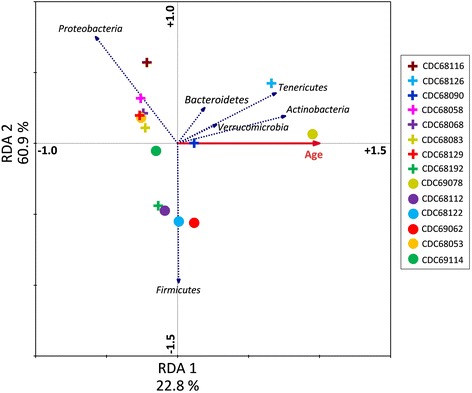Fig. 6.

RDA ordination diagram displaying the associations between samples, phylum abundance, and age. Crosses represent confirmed samples, and circles represent non-confirmed samples. The solid red vector was generated from age data representing the age of the infant at the time of sample collection, and blue vectors represent phylum-level abundances. Each vector points in the direction of steepest increase of value, and the length of each vector indicates the measure of fit for each sample relative to the vector. Angles between vectors indicate the correlation between the individual factors. Approximate correlations are positive when the angle is <90° and negative when the angle is >90°
